Skylake vs. Kaby Lake: Could Intel retire its Kaby Lake-X chips this year?
Rumours suggest the Skylake-X platform could receive a refresh in 2018
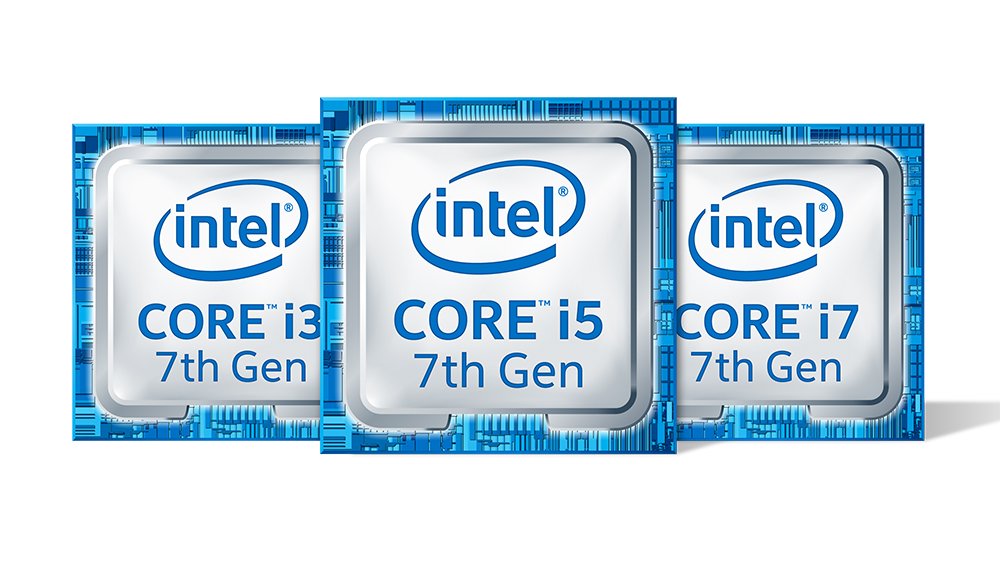

Kaby Lake is Intel's next-generation CPU, built to replace the latest generation, Skylake. Kaby Lake will launch in September 2016, having been revealed in a surprise announcement by Intel in mid-2015.
Here we round up everything you need to know about Kaby Lake and Skylake and compare what we know about the next-gen chip with the current new-gen chip.
Intel Kaby Lake latest news
27/04/2018
Could Intel retire its Kaby Lake-X chips this year?
Intel may be gearing up to retire its Kaby Lake-X line of processor chips, according to the latest rumours, which also suggest that the Skylake-X platform will receive a refresh later this year.
Kyle Bennett of HardOCP said that Kaby Lake-X will reach end of life (EOL) towards the end of 2018, with no plans currently in place to refresh the CPU range.
"Intel's Kaby Lake-X will go EOL late in 2018 with no refresh in site [sic]," Bennett wrote. "Kaby Lake-X fell well short of sales expectations. Quite frankly, that is not too soon in our opinion as we have never been exactly sure of who Kaby Lake-X was produced for. KBL-X seemed to be more of a knee jerk reaction to Ryzen."
ChannelPro Newsletter
Stay up to date with the latest Channel industry news and analysis with our twice-weekly newsletter
The rumours also suggest that Skylake-X could receive a refresh later this year - although this will not include changes to the architecture.
"We will see refreshes to the Skylake-X CPUs in late Q318 or early Q418," Bennett claimed. "These will stretch from six to 18 cores. The Skylake-X will not feature any architecture changes."
The article adds that the line will, however, be moving from Polymer Thermal Interface Material (PTIM) to Solder Thermal Interface Material (STIM) for its Integrated Heat Spreader connection.
"This seems to be a reaction to Intel needing to keep pace with its tiny jumps in performance," Bennett reasoned.
The suggestions are purely rumours at this stage, however, with Intel yet to announce any such moves for its Kaby Lake-X and Skylake-X platforms.
10/03/2018
Intel rolls out Spectre fix for Skylake and Kaby Lake CPUs
Intel has now released fresh patches to fix the Spectre variant 2 vulnerability faced by its Skylake, Kaby Lake and Coffee Lake processors.
The bug allows attackers to access system information by manipulating CPU behaviour and has been a cause of concern for customers since it was discovered last year. A botched first round of fixes from Intel earlier in 2018 only complicated matters, causing many systems to randomly crash or reboot.
In a news release last month, however, the firm said its latest batch of microcode updates are stable and now in the hands of manufacturers - with some having already begun rolling them out to customers.
"We have now released production microcode updates to our OEM customers and partners for Kaby Lake and Coffee Lake-based platforms, plus additional Skylake-based platforms," Navin Shenoy, executive VP and general manager at Intel's data centre group, said. "This represents our sixth, seventh and eighth generation Intel Core product lines as well as our latest Intel Core X-series processor family.
"It also includes our recently announced Intel Xeon Scalable and Intel Xeon D processors for data centre systems."
Intel added that patches for older Broadwell, Haswell, Ivy Bridge and Sandy Bridge processors are also on the way - and advised users to ensure their systems are always up-to-date in order to stay protected.
14/08/2017
Intel reveals full Skylake-X specifications and release dates
Intel has confirmed the final details for its upcoming Skylake-X processor range, including specifications and release dates for the new Core i9-7940X, Core i9-1960X and Core i9-7980XE CPUs.
First announced back in May, the processors all sport 44 PCIe lanes, DDR4-2666 memory, as well as a thermal design power (TDP) of 165W.
The 14-core Core i9-7940X chip, however, will be available for $1,399 and features a base clock speed of 3.1GHz, Turbo Boost of 4.3GHz, Turbo Boost Max of 4.4GHz and 19.25MB L3 cache.
As expected, the 16-core Core i9-7960X - priced at $1,699 - varies slightly with a 2.8GHz clock speed, Turbo Boost of 4.2GHz, Turbo Boost Max of 4.4GHz, as well as 22MB L3 cache.
Finally, sitting at the very top-end, the 18-core Core i9-7980XE processor offers up a base clock speed of 2.6GHz, with Turbo Boost and Turbo Boost Max the same as the i9-7960X. The SKU also boasts 24.75MB L3 cache - but, priced at $1,999, the premium SKU does not come cheap.
Consumers can get their hands on a 12-Core i9-7920X from 28th August, Intel announced, whilst those seeking the 14, 16 or 18-core SKUs can do so from 25th September.
09/06/2017
Intel unveils new Skylake X Core i9 processor
Intel has announced a new range of Core i9 CPUs as part of a "Core X" family of Skylake desktop processors.
Unveiled at Computex 2017, the brand new Intel Core i9-7900X range becomes the first with an 18-core, 36-thread desktop processor available to consumers. The top-end i9-7980XE is expected to hit the market with a $1999 price tag - although Intel is yet to reveal its release date.
As reported by Tech Radar, however, the first version of the i9-7900 X-series will sport 10 cores, 20 threads and will arrive with a base clock speed of 3.3GHz. It includes Intel Turbo Boost Max technology at 4.5GHz, 13.75MB of L3 cache, four channels of DDR4-2666 RAM and a thermal design power of 140W.
All CPUs within the new Core i9 line also feature up to 44PCIe lanes and Intel Optane memory support.
The first model will cost approximately $999 (£780) on release, with the 12, 14, 16 and 18 core models to follow over the next few months, Intel said.
As well as the new i9 CPUs, Intel also announced more powerful versions of its Core i5 and Core i7 processors as part of the new Core X family. The new, entry-level 4-core, 4-thread i5-7640X ($242) and the 4-core, 8-thread i7-7740X ($339) have been built on Intel's Kaby Lake X.
30/08/2016
Intel's new 7th-generation Kaby Lake processors will hit the channel next month, the company has confirmed.
Devices like 4K laptops and convertibles containing the company's new CPUs are expected to be available from OEMs starting in September, ramping up to include more than 100 different models by Q4 2016.
More processors will be released in January, including chips for enterprise users and workstations, and high-end gaming SKUs.
Kaby Lake will power a range of feature-rich designs, the company said, including more than 120 devices with support for the Thunderbolt 3.0 standard, more than 100 designs supporting the Windows Hello biometric login, and more than 50 4K designs.
The company is putting a strong emphasis on mobility, with ultra-thin detachables, convertibles and clamshells, including notebooks thinner than 10mm.
Intel is also boasting of double-digit performance increases over its 6th-gen chips for productivity and web performance, thanks to processor and CPU optimisations.
17/08/2016
Intel’s upcoming Skylake-X and Kaby Lake-X processors are set to be launched in Q3/Q4 2017, according to reports.
Earlier rumours had suggested a possible Q2 release for the processor chips but Techfrag reports that a later release is more likely.
Citing information from Benchlife, the website also adds that both the Skylake-X and Kaby Lake-X enthusiast chips will both be launched at the same time and will be based on the 14nm processing node.
Both processors will also be powered by Kaby Lake Platform Control Hub, with the Kaby Lake-X chip expected to boast a “more optimised design.”
The family of Skylake-X processors will sport 6-core, 8-core and 10-core SKUs, a maximum thermal design power (TDP) of 140w and 44 PCIe Gen3.0 lanes, the website reports.
The Kaby Lake series, however, will receive 4-core chips and aimed at consumers with a lower budget. The 4-core core chips also means that only Core i7 and Core i5 models will be produced.
Techfrag also reports that the Kaby Lake-X family’s TDP will be 112w, with the processors also registering higher clock speeds than Intel desktop LGA 1150 equivalents.
Both the Skylake-X and Kaby Lake-X processors will sport an LGA 2066 socket – meaning existing chips with LGA 1150 sockets will be incompatible with the new Kaby Lake platform.
In contrast to Kaby Lake-S and Broadwell-E’s support for speeds of up to 2400MHz, the new Skylake and Kaby Lake CPUs will be able to handle up to 2667MHz.
Skylake-X will include quad channel memory support, whilst Kaby Lake-X will feature dual channel.
27/06/16
Skylake-X and Kaby Lake-X could debut at Computex 2017
Following the initial rumours of a Skylake-X and Kaby Lake-X arrival in Q2 2017, fresh details have emerged revealing some exciting developments.
The Skylake-X chips are positioned as the successor to the newly released Core i7-6950X Extreme Edition “Broadwell-E” processor, which currently acts as Intel’s flagship enthusiast solution. These high-end processors are serious business, with the existing Core i7-6950X retailing at around $1700.
Building on earlier announcements, Skylake-X is expected to consist of two SKUs with 10 physical cores and a maximum thermal envelope of around 140 watts. The two Skylake-X chips are rumoured to be compatible with the new R4 socket, aka LGA20166.
We can also expect the new Kaby Lake-X processor, with four physical cores and a thermal envelope around 95 watts, to also support the R4 socket.
New reports claim the eagerly anticipated Kaby Lake PCH (Series 200) chipset will be compatible with both the Skylake-X and Kaby Lake-X architectures. This marks a significant change from previous high-end Intel chips, which typically use a separate chipset different from mainstream options.
The Series 200 chipset is rumoured to be going through quality sampling as early as August 2016. The chipset is expected to support up to 10 USB 3.0 ports, six SATA 3 ports and 24 PCI-e 3.0 lanes. Additional features are said to include support for up to three 4X ports for PCI-e 3.0 drives, and support for Direct Media Interface (DMI) 3.0.
As it stands the next six months of Intel’s processor roadmap are looking hectic. Reports suggest we can expect the Kaby Lake-S processor family arriving in January at CES 2017. Where it will go head to head with the first AMD Zen processors. Then in June, the Skylake-X and Kaby Lake-X processors are expected to debut at Computex 2017.
19/06/2016
Mounting pressures to shelve Kaby Lake
With the PC market continuing to stutter, mounting pressure from PC manufacturers could force Intel to shelve the Kaby Lake processors.
Following the launch of Skylake, we saw only incremental performance gains over the Broadwell predecessor. With Kaby Lake arriving late 2016, many experts believe we’ll see more of the same, viewing Intel’s pending processor as little more than a final attempt to squeeze revenue from its 14nm process, before moving to the 10nm process and the launch of Cannonlake.
Recently, we saw reports that AMD was delaying the launch of its new Zen processor to allow its PC manufacturing partners to shift unsold inventory.
IDC is already reporting that the PC market is shrinking by 7.3 percent. The combination of these two factors places Intel under extreme pressure to either delay or shelve Kaby Lake. If Intel were not to extend the same the courtesy shown by AMD to its PC partners, it could be extremely damaging to future relationships. Placing the possibility of heavy financial losses on its manufacturing partners, with consumers likely to leave unsold Broadwell and Skylake inventory on the shelves. Opting instead to wait for the hardware shipping with the Cannonlake processors.
02/06/16
Skylake-X and Kaby-X details leaked
Intel is set to launch its next-generation high-end Skylake-X and Kaby Lake-X chips, according to a leaked roadmap.
The roadmap was leaked by Chinese website Benchlife, and said that the two processors would be launched in the second quarter of 2017.
Both chips will be based on the 14nm manufacturing process with Skylake-X featuring current architecture while the Kaby Lake-X series getting some chip design optimisations.
The two chips will succeed Broadwell-E chips. It appears that Intel will ditch the classic E and K nomenclature in favour of X. Skylake-X is likely to have 6, 8 or 10 cores but a great instructions per core (IPC).
In more official news, Intel has improved the integrated graphics processor in its new Xeon E3-1500 v5 family of server chips. They will be able to stream 4K over the internet to PCs and mobile devices.
The new processors are capable of delivering up to 18 AVC streams or eight HEVC streams at 30 fps full HD, or two HEVC 4K streams running at 30 fps.
The chips are based on Skylake and sports Iris Pro Graphics P580, which Intel claims is its best integrated GPU. The firm boasts 26 percent improvement in overall graphics performance on previous generations.
There are five SKUs in the Xeon E3-1500 v5 family, three of them aimed at data centre usage, while the other two are focused on media processing.
“The increased graphics capabilities offered by the Intel Xeon E3-1500 v5 family enable complex, 3D applications to be delivered remotely to multiple end devices from secure public and private cloud data centres – unleashing the professional ‘creator’ and enabling greater collaboration among the global workforce,” said Intel in a statement.
01/06/16
Intel confirms 400 devices will ship with Kaby Lake
Intel has confirmed that the 7th generation Kaby Lake core processors and Optane solid-state disks will be launching this year.
As reported yesterday, Asus has announced it will start shipping its Transformer 3 tablet with a Kaby Lake CPU in Q3. However, Navin Shenoy, corporate VP and general manager for Intel’s Client Computing Group, said during a keynote at Computex that more than 400 devices with the chip design will hit the market this year.
Although there’s still not a great deal of information coming from Intel, we now know that the Kaby Lake processors will be fabricated on the same 14nm process as Broadwell and Skylake before them. Intel also said that Kaby Lake processors will have native support for USB 3.1 and Thunderbolt 3, and that models in the family will range up to 95W TDPs.
Arstechnica UK points to rumours that say the Kaby Lake launch “will start with low-voltage Core i3/i5/i7 and Core m3/m5/m7 CPUs for laptops and convertibles first and come to desktops later.”
The site also notes that Kaby Lake “breaks from the "tick-tock" schedule that Intel has followed for most of the last decade; that schedule has been replaced by something Intel calls Process, Architecture, Optimization (above), in which it introduces a new process (formerly a tock), introduces a new architecture on that process (formerly a tick), and then tweaks the architecture without changing the process. However, Kaby Lake is an ‘optimisation’ and will be built on the same 14nm process as Skylake.”
31/05/16
Kaby Lake to ship in Q3 with Asus Transformer 3 tablet
Intel has confirmed that its Kaby Lake processor will start shipping in Q3, inside the Asus Transformer 3 tablet.
The rollout of the 7th Generation Core chip was announced at Computex in Taipei.
PC World suggests the Transformer 3 (pictured), which has a 12.6-inch screen, provides some insight into what top-line Kaby Lake PCs may look like. The tablet PC has a Thunderbolt 3 port, which can drive two 4K displays and doubles as a USB C connector.
It adds that Intel has been looking to integrate the controller for that inside its chipset, and also to improve integrated graphics on its chips. The screen on the Transformer 3 displays images at a resolution of 2880 x 1920 pixels, compared to 2736 x 1824 pixels on Microsoft’s Surface Pro 4.
The device will ship in Q3 starting at $799 (£546).
It has been widely reported that Microsoft’s Surface Book 2 – which was reportedly pencilled in for launch in June 2016 – will launch early next year with the upgraded Kaby Lake processor.
Kaby Lake’s main competition is set to be AMD’s Zen, which will first appear in gaming PCs by year end, and desktops and laptops next year.
In the meantime, Intel is keeping quiet on Kaby Lake, and has said it won’t be releasing any further information at Computex.
13/05/16
Kaby Lake benchmarks leaked?
Fudzilla is reporting that the new third-generation 14nm Kaby Lake architecture will be a quad-core processor that runs at 3.6 GHz, 4.2 GHz turbo, backed with 8MB of L3 cache, according to a leaked benchmark document (below).
The site says: “Running at the 4.20GHz Turbo clock frequency in Windows 10 x64 (and perhaps using an engineering sample), the benchmarks show 118.71 GOPS (giga-operations per second) across eight threads, 313.84 megapixels per second in the multimedia test, 35.30 GOPS in the Microsoft .NET arithmetic benchmark, 5.59GB/s cryptographic performance, 23.2 nanoseconds DDR4 latency, and 37.41 megapixels per second GPU performance.”
It is expected that most vendors will start shipping Kaby Lake CPUs between July and October 2016.
Kaby Lake desktop CPUs like the Core i7 7700K will retain full compatibility with existing Intel Z170 motherboards, but the company will also offer a newer 200-series chipset built on LGA 1151 with a few more I/O-side improvements. The chipset is said to include up to 24 PCI-Express 3.0 lanes (up from 20), six native SATA III 6Gbps ports and ten USB 3.0 ports.
PC Perspective notes that apart from a lower CPU base clock, 3.6 GHz versus Skylake’s 4.0 GHz, Kaby Lake appears to be identical to Skylake.
Mass production of the processor is expected to start in June 2016.
18/03/16
Kaby Lake to launch in Q3 2016?
A leak of Intel’s latest desktop roadmap has appeared and boasts two upcoming processor generations from the chip giant, Kaby Lake and Cannonlake.
According to reports by Benchlife, the mobility roadmap features three generations of processors including the current Skylake processors as well as its replacement, Kaby Lake and its follow up Cannonlake.
Skylake was launched in Q3 last year and aimed at powering Windows 10 systems. According to a leaked slide, Intel could refresh the processor line-up as soon as Q3 2016 and this will introduce Kaby Lake. This should feature in Ultrabooks, Notebooks and two in ones (2in1).
There will be several SKUs including; Kaby Lake U, Kaby Lake Y, Kaby Lake H and Kaby Lake S chips.
Kaby Lake looks set to feature support for Thunderbolt 3, new media and display engines as part of an SOC design. For mobile user, there will be the addition of even faster integrated graphics chips.
Skylake vs. Kaby Lake
Intel (NASDAQ:INTC) surprised the computing industry back in July 2015 by announcing a successor to Skylake built to the 14 nanometer specification. Delaying the expected 10 nanometer Cannonlake processor to H2 2017, Kaby Lake will be another tock (or somewhat semi-tock) in Intel’s ‘tick-tock’ strategy.
As details of Kaby Lake continue to emerge, we take a more detailed look at Intel’s 7th generation processor, how it compares to Skylake and what this means for the industry.
A current look at Skylake
Skylake - Intel’s 6th generation processor - is a complete redesign of an already existing process technology, following on from the Broadwell processor. Considered a ‘tock’ in the Intel ‘tick-tock’ strategy, the processor has brought impressive gains in performance and battery life to the modern desktop and mobile device. The 14 nanometer processor provides full support to the latest 100 series chipset from Intel, but frustrated hardcore consumers who were unable to upgrade to Skylake without a new motherboard.
Skylake has been received well by the hardware industry, with Dell amongst the first to integrate the processor into their desktop and device offering. Microsoft followed closely, offering the new processor suite in the Surface Pro 4, whilst also combining it with the new chipset in the company’s debut first-party laptop, the Surface Book.
Skylake has been rolled out across the full Intel brand - from the introductory 2.7 GHz Celeron processor, through to the flagship Core i7 offering an impressive 4.0 GHz clock rate. This will offer impressive application loading, whilst advancements in Smart Cache offer much faster access to data for users. The product portfolio also includes a series of mobile processors including Core m3, m5 and m7. The processor embraces the new DDR4 memory but remains backwards compatible, interoperating with both the DDR3 and DDR4 memory types. The processor also supports the new Thunderbolt interface. A revolutionary I/O technology which supports high-resolution displays and high-performance data devices through a single, compact port.
Despite its apparent advancements and successes, the 6th generation processor has not been without its controversies. Most recently this involved the revelation that certain third-party CPU coolers were bending the Skylake CPU upon mounting, due to the processors’ thinner construction. Intel quickly distanced themselves from the scandal, placing the blame squarely on the shoulders of the manufacturers of said third-party CPU coolers.
A look ahead to Kaby Lake
Although the full scope of enhancements in Kaby Lake is not yet known, a leak of Intel slides from BenchLife and a continuing trickle of information can begin to help us build a framework of what the processor will deliver. Consider this a work in process which will be updated as concrete details emerge.
So far we know that the processor will remain with the 14 nanometer manufacturing process. With Kaby Lake due H2 2016, this was confirmed following reports from Semiconductor Engineering of delays to equipment move-in for one of its 10-nanometer manufacturing plants to the second quarter of 2016.
According to the leaks from BenchLife, Kaby Lake is expected to support the same DDR4 memory and backwards compatibility of Skylake. We expect limited gains in battery life and performance due to the same 14 nanometer architecture, however there will be a range of improvements to feature benefits. The processor will offer native USB 3.1 support - unlike its predecessor which require a third-party add-on chip. The 7th gen processor is also expected to include full hardware support yo encode both 10-bit HEVC an VP9 video streams. In simple terms, Kaby Lake will be far more efficient that Skylake in delivering high-definition video playback. This new graphics architecture will be appealing to consumers in a marketplace transitioning to the 3D and 4K environment.
On January 15, 2016, Microsoft announced that Windows 10 will be the only supported Windows platform for Kaby Lake processors. An early signal that the tech giant will be supporting the new processor and including it in 2016/17 plans for the Surface product portfolio.
What this means for resellers and retailers
First and foremost, it means that we will not see 10 nanometer processors until sometime in mid to late 2017 at the earliest.
Beyond that, initial details on Kaby Lake suggest the hardware industry will again integrate Kaby Lake into their devices. Meaning, we can expect new tech shipping with Kaby Lake in late 2016. There are enough feature enhancements already to give both consumers and retailers a headache on whether to shift to the new Kaby Lake processor.
A fact that will likely become clearer as further details being to emerge about Intel’s 7th generation processor.
Dan is a freelance writer and regular contributor to ChannelPro, covering the latest news stories across the IT, technology, and channel landscapes. Topics regularly cover cloud technologies, cyber security, software and operating system guides, and the latest mergers and acquisitions.
A journalism graduate from Leeds Beckett University, he combines a passion for the written word with a keen interest in the latest technology and its influence in an increasingly connected world.
He started writing for ChannelPro back in 2016, focusing on a mixture of news and technology guides, before becoming a regular contributor to ITPro. Elsewhere, he has previously written news and features across a range of other topics, including sport, music, and general news.
-
 Stronger Together: Why IT-Security Collaboration Drives Greater Security and Efficiency
Stronger Together: Why IT-Security Collaboration Drives Greater Security and EfficiencyDiscover why unification is the key to scalable, consistent security
By ITPro
-
 This tech company wants to pay staff to look after their mental and physical wellbeing
This tech company wants to pay staff to look after their mental and physical wellbeingNews Hot on the heels of its four-day week trial, tech company Thrive is offering staff new incentives to take care of their mental and physical wellbeing.
By Ross Kelly
-
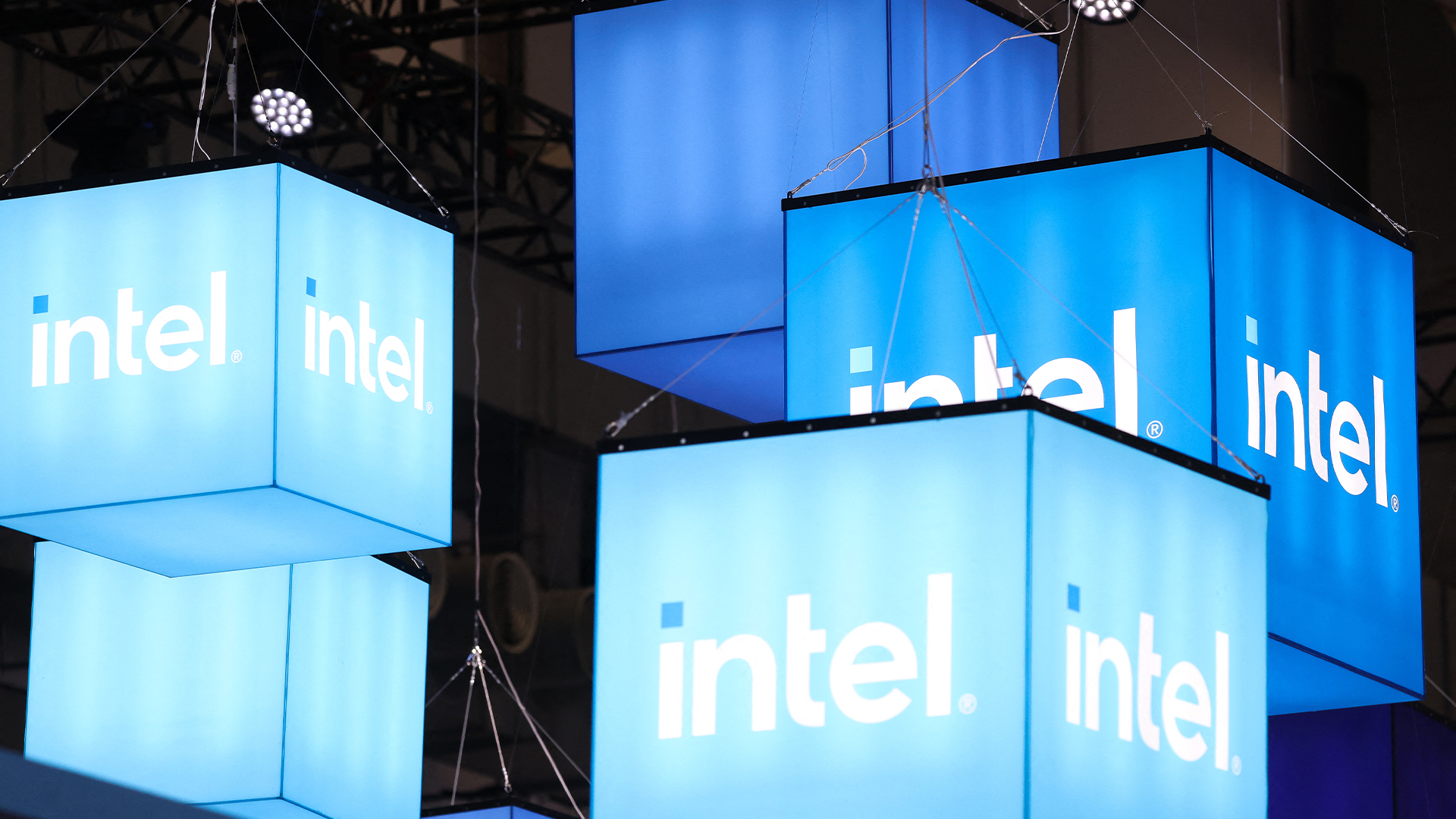 The gloves are off at Intel as new CEO plots major strategy shift
The gloves are off at Intel as new CEO plots major strategy shiftNews Intel’s incoming CEO has some big plans for the firm’s business strategy, sources familiar with the matter have told Reuters, with more job cuts looming on the horizon.
By George Fitzmaurice
-
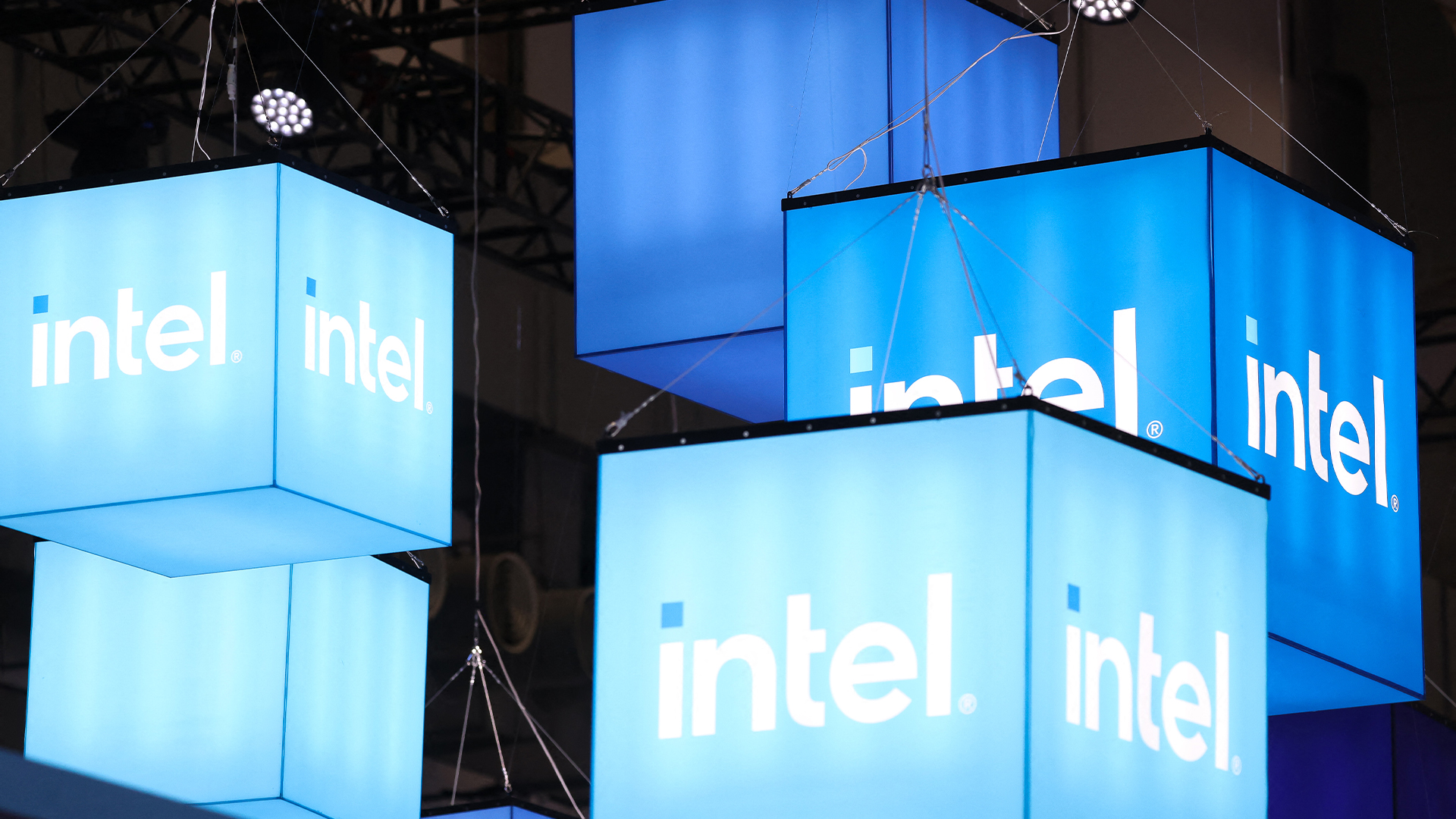 Intel just won a 15-year legal battle against EU
Intel just won a 15-year legal battle against EUNews Ruled to have engaged in anti-competitive practices back in 2009, Intel has finally succeeded in overturning a record fine
By Emma Woollacott
-
 AMD and Intel’s new x86 advisory group looks to tackle Arm, but will it succeed?
AMD and Intel’s new x86 advisory group looks to tackle Arm, but will it succeed?News The pair will look to make x86 CPU architecture more interoperable
By George Fitzmaurice
-
 Why the world is about to be swamped with AI PCs
Why the world is about to be swamped with AI PCsNews With adoption rates set to surge, AI PCs will become far more mainstream in years to come
By Nicole Kobie
-
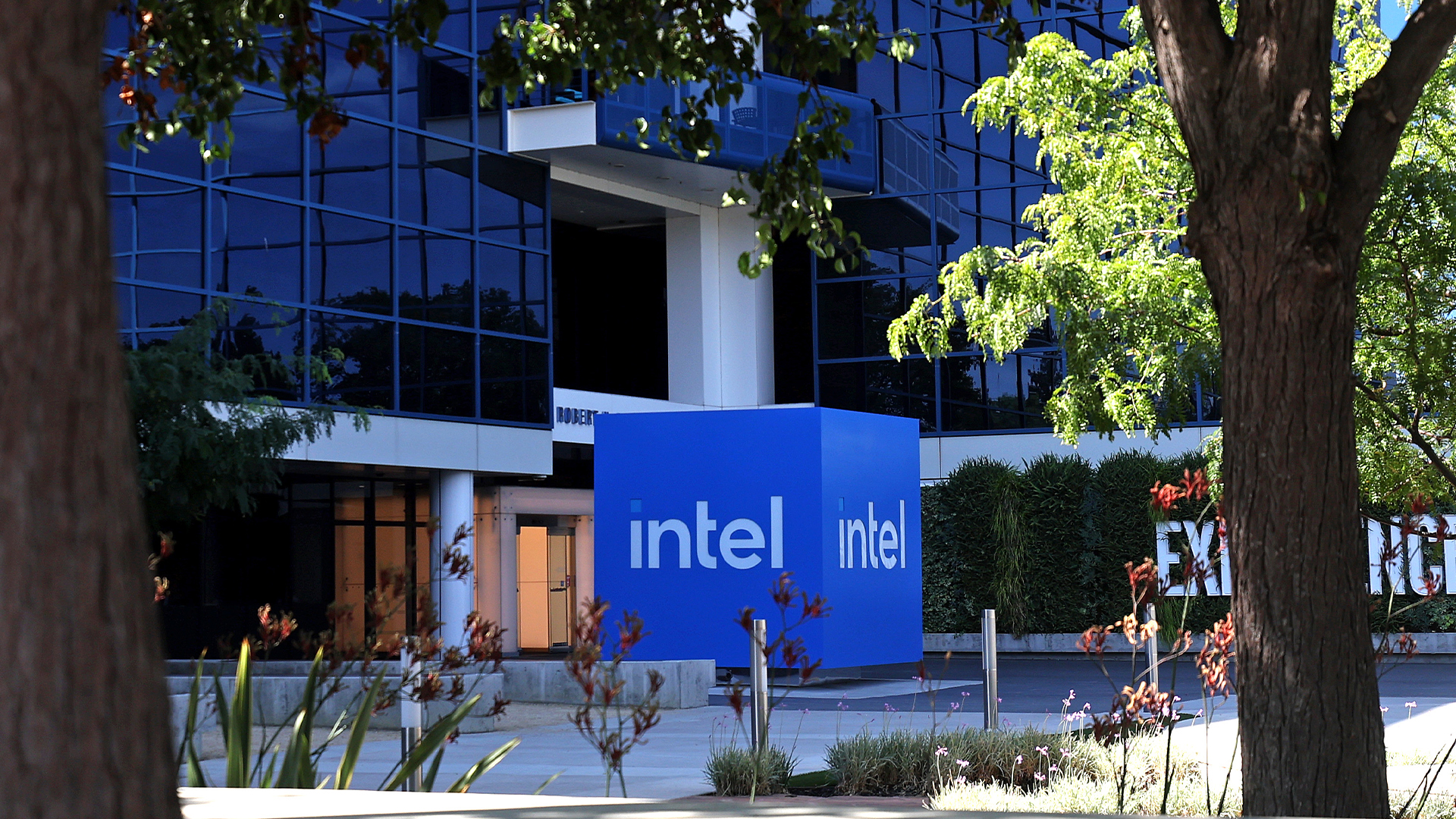 Intel needs to “get its story right” to turn things around and capitalize on the AI boom
Intel needs to “get its story right” to turn things around and capitalize on the AI boomAnalysis Intel has entered a period of uncertainty after announcing restructuring plans and a huge round of layoffs
By George Fitzmaurice
-
 How monitors deepen your employee experience and support your distributed workforce
How monitors deepen your employee experience and support your distributed workforcewhitepaper Drive business outcomes by empowering, enabling, and inspiring employees with the right monitors wherever they work from
By ITPro
-
 Forrester: Power up your hybrid workplace with monitors
Forrester: Power up your hybrid workplace with monitorswhitepaper Evolve remote work policies into work-and-learn-from-anywhere strategies
By ITPro
-
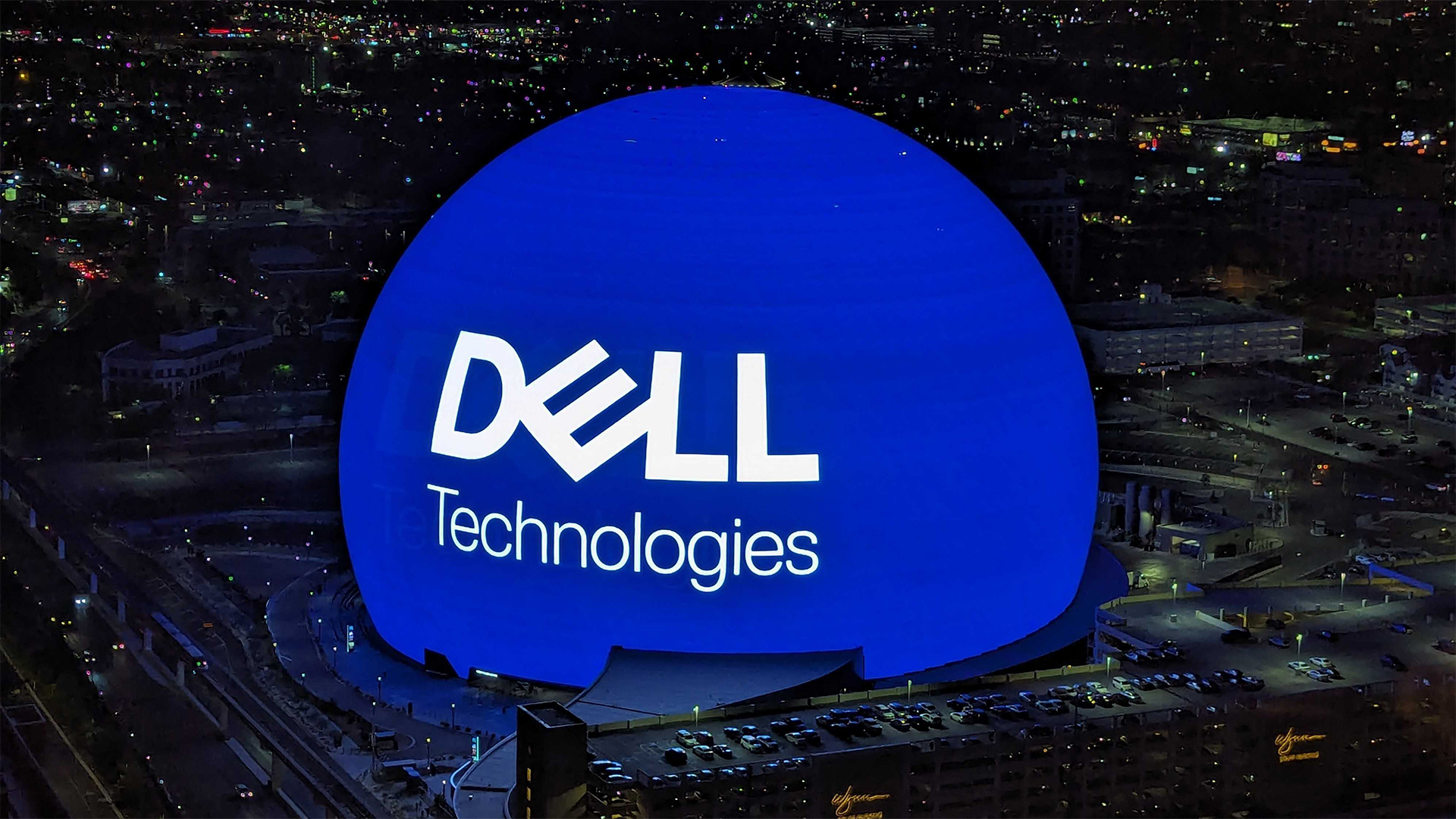 Driving employee experience and productivity across industries
Driving employee experience and productivity across industrieswhitepaper Monitors are an imperative in the hybrid era
By ITPro